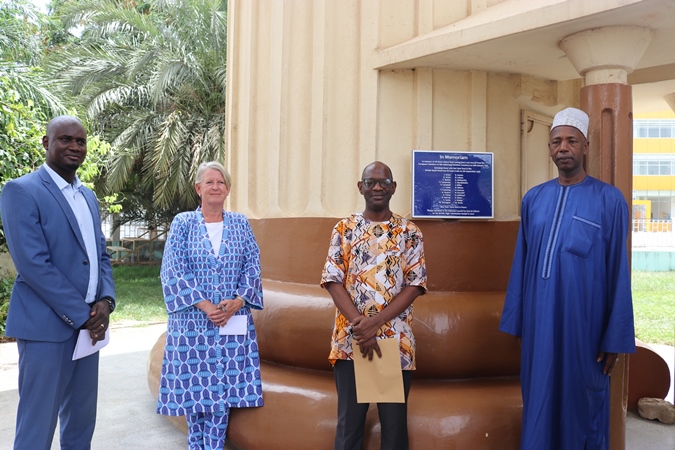
We were profoundly grateful to the National Centre for Arts and Culture for their support in helping us to piece together what happened in 1946 and the circumstances behind the move of the graves to Jeshwang.
Now, with the Centre’s support, the British High Commissioner has today unveiled a memorial plaque at Arch 22, to commemorate those who lost their lives in the crash and to create a public record of the final resting place for all those originally buried in the Cemetery.
We hope that this will help ensure that future generations of visitors to The Gambia will come to be aware of this piece of UK-Gambia aviation history and that the families of those who lost their lives will know that their loved ones’ names have been preserved and their memory kept alive.
In 1946, the world was recovering from WWII and welcoming in a new era of hope and optimism for the future. For many this meant seeking out new opportunities and the chance to rebuild lives and families, whether at home or overseas.
From the earliest days of aviation, The Gambia had established itself as one of the main stopover points for flights from Europe to South America and at shortly after 0400 a.m. on 7th September 1946, a British South American Airways flight took off from Banjul, then Bathurst, en route to Buenos Aires via Natal, Rio de Janeiro and Montevideo.
Tragically the flight crashed soon after take-off, killing all 24 passengers and crew on board.
All those who lost their lives were buried in the European Cemetery near Banjul until former President Jammeh decided to use the location to erect Arch 22. The graves were moved in haste, under the supervision of armed soldiers, to the Jeshwang Cemetery.
However the fate of the graves was largely unknown until last year when a message arrived in the British High Commission mailbox from a British lady, Margaret, who was trying to find the final resting place of her father, John Hannah.
For Margaret, who was just 8 years old at the time of the crash, and her family, the loss of a father and husband, devastated their lives. John had not long returned from suffering as a PoW in Burma and the move to South America was going to provide a longed-for opportunity for a fresh start for the family. The impact of their loss must have been unimaginable.
Through Margaret, we were also able to connect with Jim and his wife Sheila - relatives of Nancy Musson, and John (Jock), nephew of Eleanor Campbell. Nancy, who was just 29 years old when she died in the crash, had served in Women’s Royal Naval Service during the war.
We thank the National Centre for Arts and Culture once again for their commitment to preserving The Gambia’s history and for the respect shown in joining us to remember those who lost their lives.
Read Other Articles In Headlines




